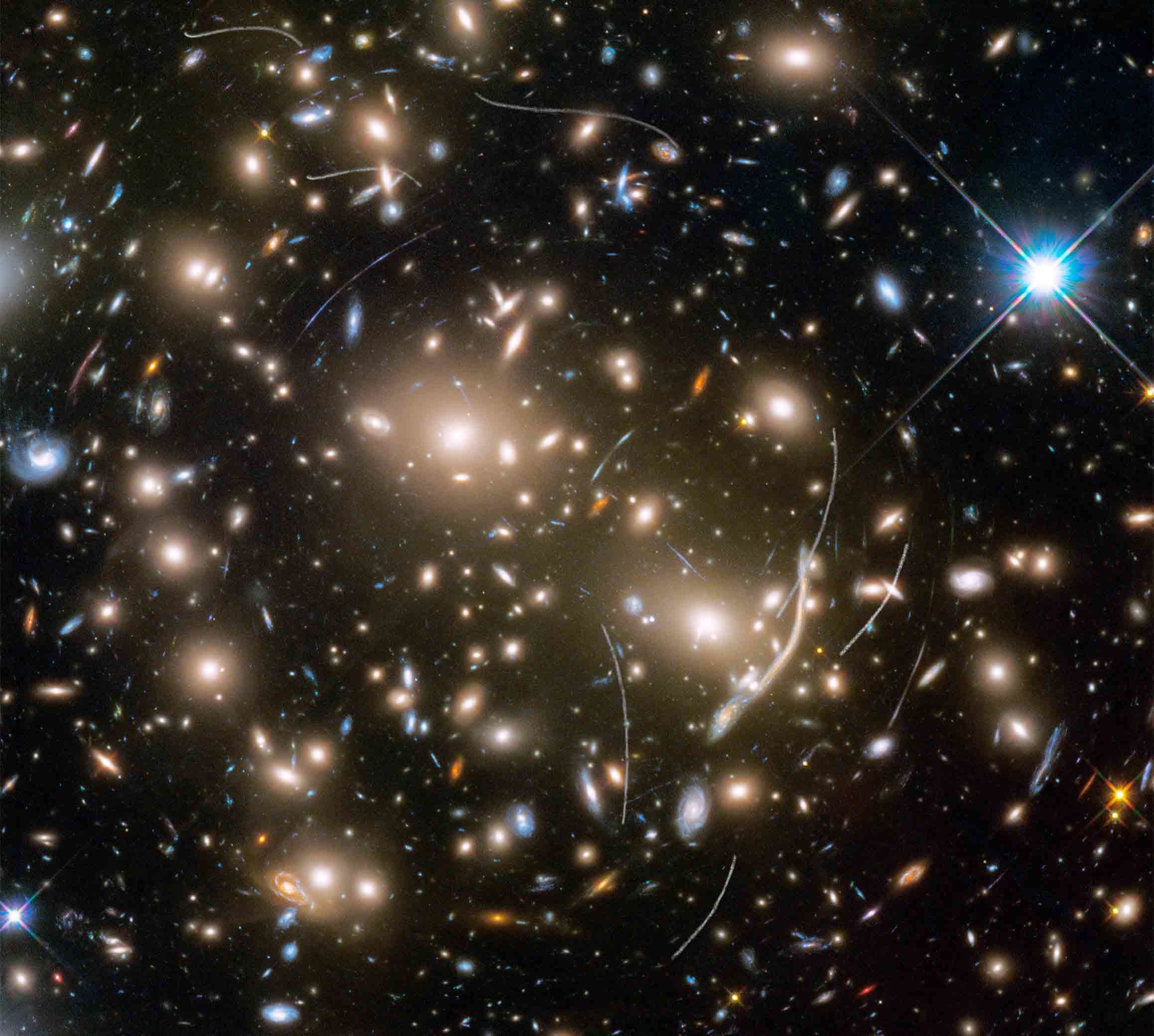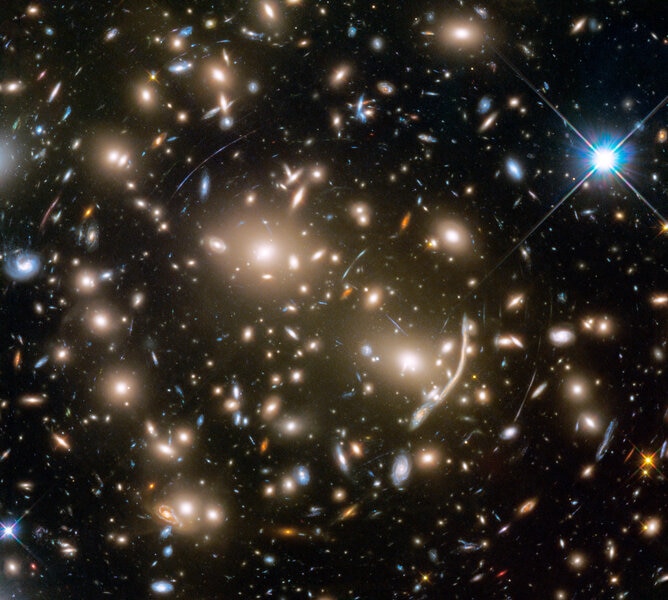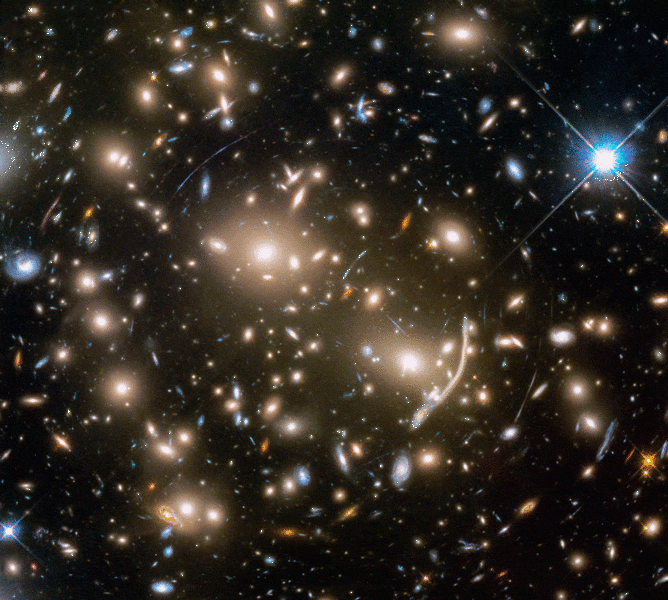Create a free profile to get unlimited access to exclusive videos, sweepstakes, and more!
Abell 370 and the vermin of the sky

Once upon a time, some astronomers called asteroids "vermin of the sky". That's because they interfered with observations of "serious" objects; y'know, galaxies and stuff. They leave trails in images and mess them up, like trying to capture a beautiful sunset and having lots of flies buzzing around leaving streaks in your photo.
Of course, asteroids are amazing objects of study all on their own, and such an attitude toward them would nowadays be considered pretty narrow-minded and dismissive.
On the other hand, though… I kinda understand their point (if not the way they made it). After all, when you're trying to observe galaxies a third of the way across the Universe and a bunch of unnamed asteroids just a couple of hundred million kilometers away photobomb your shot, it can be pretty annoying.
That image shows the incredible galaxy cluster Abell 370, located a staggering 4 billion light years away, and which contains several hundred galaxies. It's been observed by the orbiting Hubble Space Telescope many times for many reasons, one of which is to map out gravitational lensing. The gravity of the cluster bends space so severely that the light from even more distant galaxies gets warped and distorted, creating long smeared arcs of light. These arcs can tell astronomers a lot about both the source galaxy itself and the cluster doing the lensing I have actually written about gravitational lensing and described it before, in an article about this very cluster Abell 370!).
Pretty, isn't it? And all those arcs you see are gravitationally lensed background galaxies, just ripe for analysis. But that's the cleaned up version of the image; that analysis is a lot more difficult to do when asteroids get in the way! Here's what that composite image looks like before the asteroids are cleaned out:
Yikes! Yeah, that's a tad messier.
Usually, asteroids observed from Earth make short little streaks in images (or a series of dots depending on the exposure time). But with Hubble, things are different. It's in orbit, so it's own motion adds to an asteroid's motion, causing that streak to curve. This is called parallax, when the position of a distant object depends on the position of the observer. It's the same thing when you hold your thumb out at arm's length and blink first your left eye, then your right, and your thumb seems to change position against the background due to the changing perspective.
Worse, the streak the asteroid makes depends on the orientation of Hubble's orbit. If the orbit is perpendicular to the asteroid (so the circle of the orbit is facing the asteroid) the asteroid moves back and forth as Hubble moves, and the result is an elongated S-shaped curve (like an integral sign). If Hubble's orbit is edge-on to the asteroid, you get a simple curving arc. You can see both in the image (which is a composite of many, many shorter exposures taken during different times of the year, so the orientation of Hubble's orbit changes with respect to the cluster).
And all of these arcs look a lot like the lensed galaxies, don't they? You can tell the difference after a moment's study; the gravitationally lensed arcs are always perpendicular to the center of the galaxy cluster, for example, and tend to be thicker. But still, it's better to remove the asteroids. That's actually not too tough to do. They only appear in a single image, and multiple images of the same spot are taken. You can clean them out of that single image by hand (which is tedious) or you can apply clever mathematical techniques like median clipping (also called sigma clipping), which throws away pixels that are significantly brighter in one image than the others.
Here's a before-and-after animation I made using those images:
Pretty cool. I'll note that I saw lots of asteroids in images taken with STIS, a Hubble camera I worked on back in the day. The first time I ever found an asteroid in one — this was shortly after STIS launched and was installed onto Hubble by astronauts — I was pretty excited. I knew no one had ever seen this asteroid before, which meant I discovered it! With dreams of naming it in my head, I called the Minor Planet Center to report it… and, well, things didn't go according to plan. I may never live that down.
Despite that, I love asteroids, and I love reading about the amazing research being done on them. I would never refer to them as vermin! We all have to share space with everything else in this Universe of ours, and there's room for everything (pretty much by definition). We might as well get along, no matter how irritating it can be.
After all, imagine a planetary scientist using Hubble to observe an asteroid, and finding all those awful gravitational lenses getting in the way!
Like parallax, it's just a matter of perspective.





























